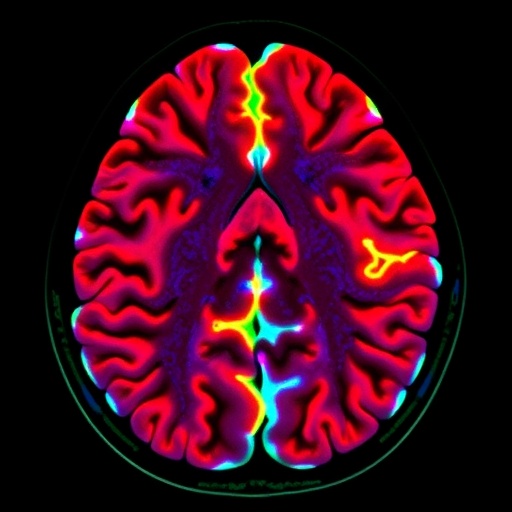A groundbreaking study published in the September 2025 issue of Aging-US has unveiled a pivotal role of the transcription factor Runx1 in the early onset of intervertebral disc degeneration, offering profound insights into the molecular underpinnings of spinal aging. Spearheaded by Takanori Fukunaga at Emory University School of Medicine and Hicham Drissi at the Atlanta VA Medical Center, the research sheds light on how overexpression of Runx1 within nucleus pulposus (NP) cells precipitates premature degenerative changes in spinal discs, potentially paving the way for innovative therapeutic interventions targeting age-related back pain.
Intervertebral discs serve as crucial cushions between vertebrae, conferring flexibility and structural integrity to the spine. The gelatinous NP at the disc’s center, rich in aggrecan and type II collagen, is essential for retaining water and maintaining disc resilience. As human beings age, the functionality of NP cells diminishes, compromising disc integrity and manifesting clinically as chronic lower back pain, a predominant disabling condition globally. Understanding molecular drivers behind this degeneration is therefore imperative for the development of targeted treatments.
By utilizing a genetically engineered mouse model with NP-specific inducible Runx1 overexpression—achieved via crossing Krt19CreERT mice with Rosa26-Runx1 transgenics—the team systematically analyzed the contribution of Runx1 to disc degeneration. Strikingly, mice with Runx1 overactivation exhibited hallmark signs of disc deterioration as early as five months, an expedited timeline relative to natural aging processes. Structural analysis showed pronounced loss of healthy NP cells, accompanied by a surge in aberrant cell populations and compromised extracellular matrix composition.
Delving into the molecular alterations, the study revealed a significant decline in key matrix proteins, namely aggrecan and type II collagen, which are indisputably linked with disc hydration and mechanical competence. Concurrently, there was an increase in type X collagen, a marker typically associated with hypertrophic cartilage and pathological tissue remodeling, signaling a shift towards an unhealthy extracellular milieu that undermines disc stability and sets the stage for degeneration.
Importantly, the research distinguished that Runx1-mediated disc degeneration is not driven by cell death but rather by premature cellular senescence—a state where cells cease dividing and exhibit altered functional profiles detrimental to tissue homeostasis. Immunohistochemical staining demonstrated elevated levels of senescence markers, including P21 and P16, within the NP of Runx1 overexpressing mice, underscoring accelerated aging at the cellular level. This phenomenon contributes to a pro-degenerative environment, where senescent cells secrete inflammatory and matrix-degrading factors exacerbating disc breakdown.
Gene expression profiling further corroborated these findings; Runx1 overexpression was associated with increased transcription of p21, p16, and NF-kB, while p53 levels remained unaltered. The upregulation of NF-kB, a key regulator of inflammation and senescence-associated secretory phenotypes, highlights an intricate interplay between Runx1 activity and inflammatory pathways that potentiate disc degradation. These molecular insights delineate a new axis of genetic regulation influencing spinal aging.
The study also illuminated a dose-dependent relationship between Runx1 activity and severity of disc degeneration, with higher expression levels correlating with more pronounced pathological changes. This dose sensitivity suggests that modulation of Runx1 expression or function could serve as a viable therapeutic strategy. Blocking Runx1’s aberrant activation in NP cells might slow or even prevent the progression of disc degeneration and its debilitating sequelae, thereby addressing a significant unmet clinical need.
Beyond elucidating the pathophysiology of intervertebral disc aging, this research carries broad implications for understanding tissue senescence and degeneration in other connective tissues. Since cellular senescence is a hallmark of aging across multiple organ systems, the identification of Runx1 as a regulator of senescence in NP cells positions this transcription factor as a potential molecular target in diverse degenerative diseases.
The implications of these findings extend into the realm of personalized medicine. By detecting altered Runx1 activity in patients, clinicians could identify individuals at higher risk for premature disc degeneration, enabling early intervention and tailored treatments. Moreover, the development of novel Runx1 inhibitors or gene therapy approaches to modulate its expression in spinal tissues opens exciting possibilities for regenerative therapies aimed at preserving spinal function and quality of life.
This innovative investigation exemplifies cutting-edge genetic and molecular techniques to dissect complex age-related processes. The integration of transgenic mouse models, histological analyses, and gene expression studies provides a comprehensive framework validating Runx1 as a driver of pathological aging within spinal discs—knowledge that could catalyze a paradigm shift in the management of chronic back pain and spine health maintenance.
In summary, this seminal work uncovers a previously unrecognized role of Runx1 in inducing premature senescence in NP cells, accelerating the deterioration of the intervertebral disc matrix and eliciting early degenerative changes. With the prevalence of spinal degeneration-related disability expected to rise with aging populations worldwide, these discoveries herald new avenues for intervention, offering hope for millions suffering chronic spinal ailments.
Subject of Research: Animals
Article Title: Runx1 overexpression induces early onset of intervertebral disc degeneration
News Publication Date: 8-Sep-2025
Web References: DOI link
Image Credits: Copyright: © 2025 Fukunaga et al. This is an open access article distributed under the terms of the Creative Commons Attribution License (CC BY 4.0), which permits unrestricted use, distribution, and reproduction in any medium, provided the original author and source are credited.
Keywords: cell senescence, aging, Runx1, nucleus pulposus, intervertebral disc degeneration




